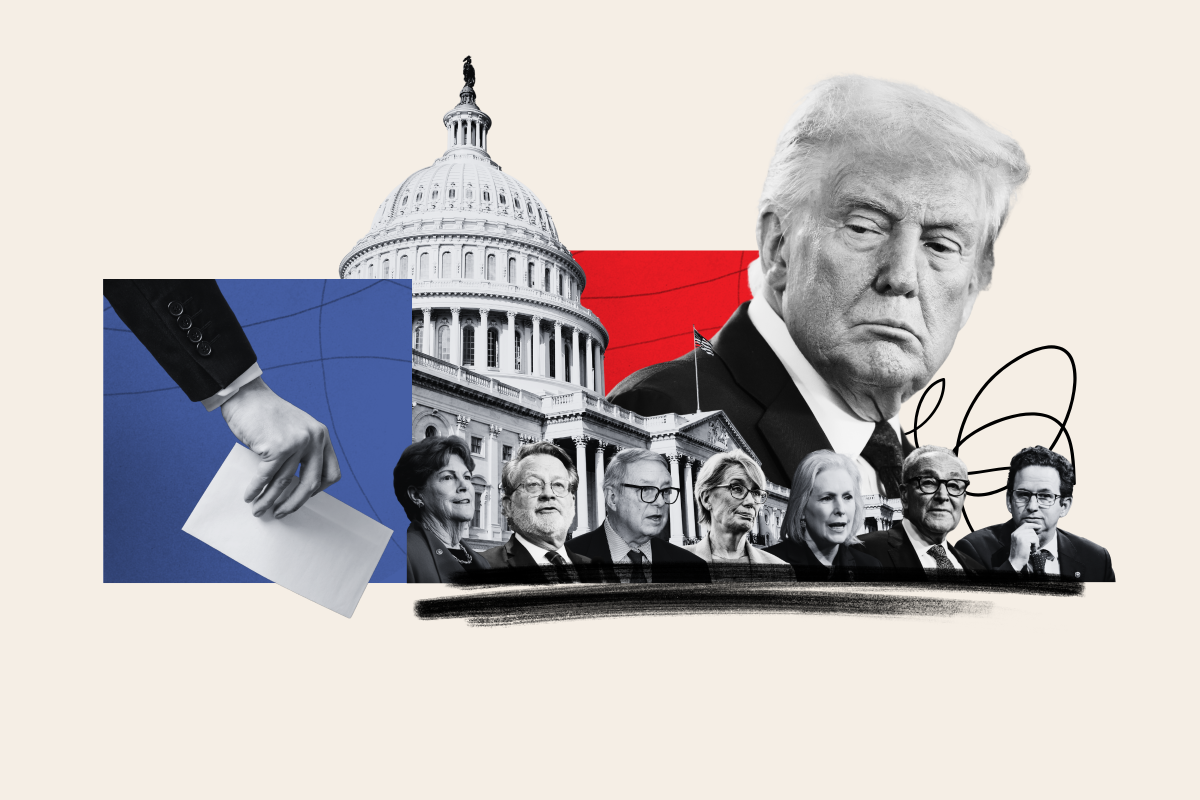
Democrats remain in a standoff with President Donald Trump and Republicans over a bill to temporarily fund the federal government and end the shutdown that began on Wednesday. Several swing-state Democrats are being closely watched as negotiations could resume later this week.
Why It Matters
Government shutdowns have many impacts—hundreds of thousands of federal workers are being furloughed or potentially fired, and the shutdown means disruptions to passport processing applications, national parks and government benefits. Leaders from both parties have sought to avoid a shutdown but have struggled to reach a deal on the temporary funding bill, known as a continuing resolution (CR).
Democrats are seeking an extension of health care tax credits that are set to expire and a rollback of Medicaid cuts as part of their negotiations, but Republicans have not agreed to such a proposal. The House has passed the stopgap bill, but it has stalled in the Senate, where it must pass the 60-vote filibuster.
It’s the first shutdown since a 35-day shutdown that lasted from 2018 to 2019.
What to Know
The Senate voted on the CR Tuesday evening, with Democratic Senators John Fetterman of Pennsylvania and Catherine Cortez Masto, as well as independent Senator Angus King of Maine, who caucuses with Democrats, voting alongside nearly every Republican to pass the bill.
Republican Senator Rand Paul of Kentucky joined Democrats in opposing the CR.
The Senate voted again on the measure Wednesday morning, with no senators changing their vote on the bill.
The bill must receive 60 votes to pass the filibuster, a key procedural hurdle. This means that if all Republicans vote for it, seven Democrats must join them. If Paul does not change his vote, eight Democrats would need to vote for the bill.
This means that up to five Democrats will need to flip for the bill to pass the filibuster.
Robert Y. Shapiro, professor of political science at Columbia University, told Newsweek that Senate Democrats are engaged in a “tough” balancing act between preventing a prolonged, disruptive shutdown and avoiding outrage from the base, as many Democratic voters have urged party leaders to fight harder against Trump’s policies.
The handful of Democrats who have already flipped may be the only ones to deflect without some concessions, he said, noting that any movement toward restoring the Affordable Care Act subsidies may be all it takes.
“The House and Senate Democratic leaders seem to have taken charge and will signal if Democrats should reverse course on the shutdown. They will be looking at public reaction and to what extent the Democrats are being blamed. At this point the blame seems to be more on the Republicans and Trump, and the health care issue may have some resonance,” he said.
Democratic senators from swing states, as well as those who voted for a similar CR in March, are being closely watched as lawmakers seek a swift end to the shutdown.
New Hampshire Senators Jeanne Shaheen and Maggie Hassan are among those who are viewed as key votes on the bill. Both are viewed as more moderate Democrats who voted for the March CR, and Shaheen is retiring at the end of her current term. In a statement, Shaheen wrote that her two priorities are avoiding a shutdown and extending the ACA tax credit.
“We must work quickly across the aisle to fund the government and we need to return to Congress’s bipartisan process of delivering spending packages that provide long-term certainty to our communities and federal agencies,” Shaheen wrote.
She said on Wednesday she will continue to vote against the CR, and that she believes he can get a deal that will address the ACA credits, reported Punchbowl News’ Max Cohen.
Senators Dick Durbin of Illinois and Gary Peters of Michigan are also among those retiring senators who voted for the previous CR. Shapiro, however, noted that retiring senators may not necessarily be willing to buck leadership.
Senators Kirsten Gillibrand and Brian Schatz, as well as Minority Leader Chuck Schumer, also voted for the CR in March but have not signaled that they plan to vote for the current CR.
Democrats representing states won by Trump last November are also among those viewed as potential key votes on the bill. That includes Senators Mark Kelly and Ruben Gallego of Arizona, Jon Ossoff and Raphael Warnock of Georgia, Elissa Slotkin of Michigan, Jacky Rosen of Nevada and Tammy Baldwin of Wisconsin.
All voted against the March CR and have not indicated they plan to switch their vote this time without concessions.
Slotkin, in a statement, wrote that she feels she has a responsibility “to at least push for these costs to be addressed.”
“Republicans control the White House, Senate, and the House, so I understand that negotiations won’t yield everything I want,” she wrote. “But serious adults can sit down, negotiate in good faith and pass a budget.”
Ossoff, who is up for reelection next year, wrote in a statement that he wants to see Trump and Republicans “work across the aisle to reopen the Federal government and to prevent these huge increases in health care costs for Georgia families.”
What People Are Saying
Hassan wrote to X: “The American people want to be able to afford health care and they want to keep the federal government open. I voted today for a bill that would have done both. Unfortunately, President Trump and Congressional Republicans refused to work across the aisle and instead chose to shut the government down. I urge leaders on both sides of the aisle, including President Trump, to come to the negotiating table and reach an agreement to protect health care and keep the government open.”
Senate Majority Leader John Thune said on Fox News on Tuesday: “I think there are a lot of them who know that their leadership is walking them off a cliff and really want to do something other than follow the leader, but they are under so much pressure from the political left in this country.”
Schumer wrote to X: “This is Donald Trump’s shutdown. He owns it.”
Peters wrote in a statement: “No one wants a government shutdown, but health care premiums are estimated to double, and this Administration has already shown they don’t care if costs go up for hardworking families. Michiganders elected me to fight for them. I stand ready to work with my colleagues on both sides of the aisle to reach a bipartisan deal that prevents health care costs from rising even more and meets the needs of all of our communities.”
What Happens Next



